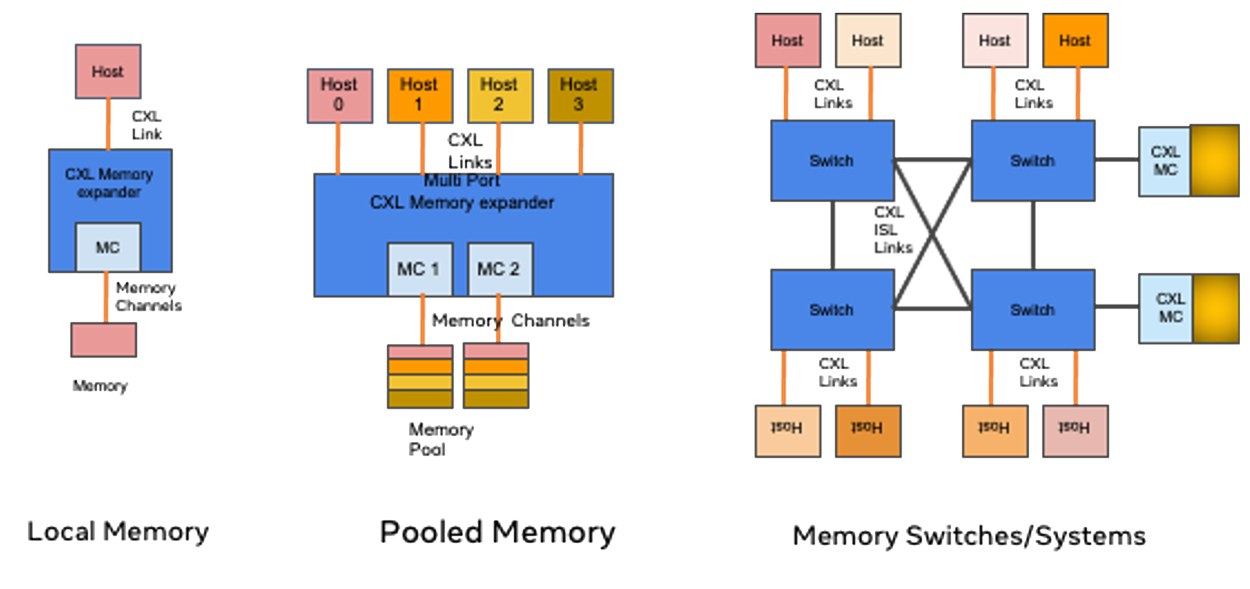Establish memory architecture and benchmarks driving innovation in next generation data center computation infrastructure
As AI/ML use cases driving large memory computational systems experience significant growth in the industry, the memory available for computation plays a significant role in power, performance and TCO of the future services. It’s not a coincidence that CXL, Gen-Z and other memory interconnect technologies have been worked on by the brightest minds in the industry to make sure that future computational infrastructure memory deployed in data centers will be untethered from the CPU to provide the best system level solutions.
New open interconnect technologies (E.g. CXL) are driving a new capability for memory (and IO, accelerators) connectivity in next generation servers. Especially for hierarchical and tiered memory system architectures, new interconnects introduce opportunities for new computational architectures through CPUs, CXL memory buffers, heterogeneous memory technologies (in a single platform), along with some future potential topologies with switches, accelerators.
The Open Compute Project Foundation (OCP) is excited to announce that formal work has been undertaken under the Composable Memory Systems (CMS) Project. This work started in February 2021 when the Future Technologies Initiative - Software Defined Memory (SDM) was kicked off to study the use cases, interconnect preferences and system characteristics of such memory systems.

CXL can enable memory expansion within a system locally, but also can enable more innovative solutions that allow pooling/sharing of memory across multiple hosts.
The Composable Memory Systems Project aims to follow a a hardware-software co-design strategy , developing a community to standardize and drive adoption of tiered and hybrid memory technologies and solutions that can benefit data center applications across industries such as AI-ML/HPC, Virtualized Servers and Cache/Databases.
The Project aims to bring together the community of data center operators, application developers, and equipment and semiconductor companies to establish architecture and nomenclature that will be published by the group as part of the composable memory system specification. This group will also offer benchmarks that enable validation of such systems providing common ground for hardware-software co-design for innovation in hardware and software components. Applications will greatly benefit from the performance and cost efficiencies that CMS standardized solutions provide.
Many companies who are existing OCP members have joined this effort include Meta, Microsoft, Intel, Micron, Samsung, AMD, VMware, Uber, ARM, SMART Modular, Cisco and MemVerge. As the group becomes a formal sub-project under the OCP Server Project, the industry can join and drive the memory focused innovations to adoption.
As the CSM group formally launches as an OCP Project, we would like to invite all of you to participate and help us drive this next frontier of innovation for computational infrastructure systems from the perspective of a hardware and software and systems architecture.